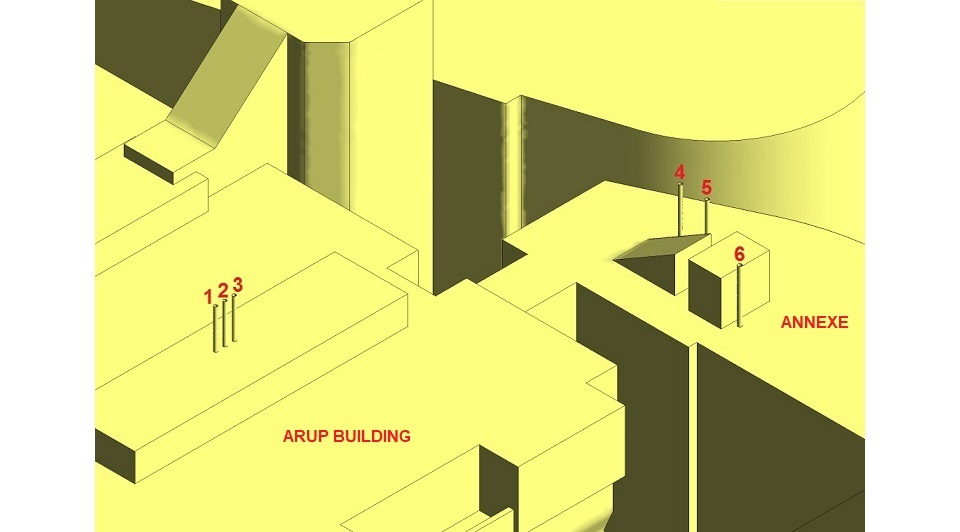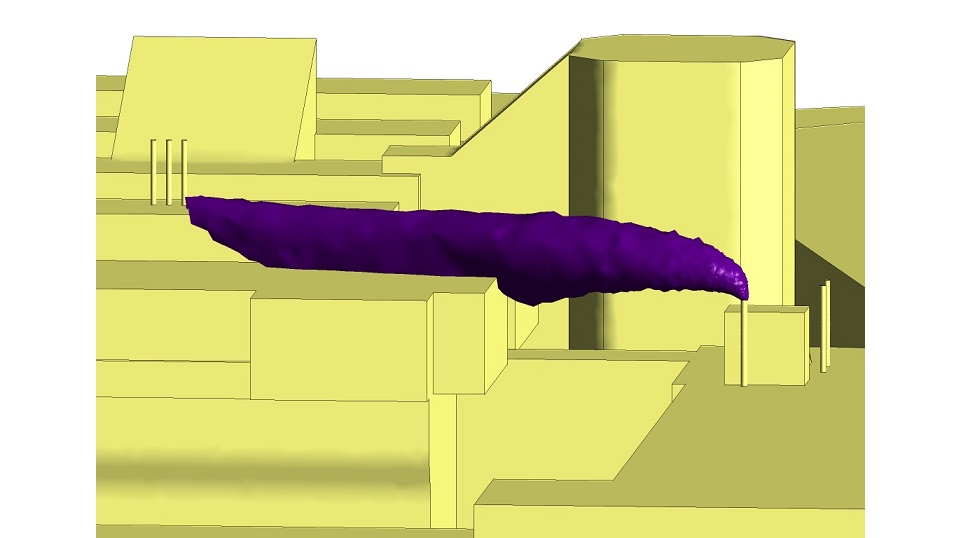Case Study – Fume Dispersion from the Arup Building
The challenge
The Arup Building in the centre of Cambridge houses the Museum of Zoology, the
Department of Zoology and other departments of the University of Cambridge. The
Museum and the Department of Zoology are equipped with fume cupboards which
discharge pollutants into the atmosphere from stacks on the roof of the building.
Under a refurbishment programme the stacks will be removed and replaced by new
stacks located elsewhere on the roof of the Arup Building and its Annexe. The new
stacks must be high enough so that the fumes discharge safely into the atmosphere
and do not pose a risk to the occupants of other buildings or pedestrians.
The solution
Atkinson Science carried out a computational fluid dynamics (CFD) study to
determine how high the stacks have to be to enable the fumes to disperse safely in
the wind conditions experienced in the Cambridge area. The CFD model included the
Arup Building, the Annexe and the surrounding buildings. The CFD model and a
close-up of the stacks are shown below. The stacks on the Arup Building are
numbered 1 to 3 and the stacks on the Annexe are numbered 4 to 6.
CFD model

Close-up of the stacks

The Arup Building and the Annexe are high-rise buildings with six and five storeys,
respectively. They receive little wind shelter from the the surrounding buildings.
Any wind approaching the Arup Building or the Annexe will separate from the roof
and generate a large region of recirculating flow across the roof. If the stacks
do not rise clear of this recirculating flow then the fumes may be driven
downwards and onto the roof of the building or the roof of a neighbouring
building.
There are no regulations governing the number of dilutions a stack must provide
before the fumes come into contact with people. Given our experience, we would
expect any stack to provide 100 dilutions, whatever the wind conditions. With this
figure in mind, the science officer of the Arup Building can calculate the highest
concentration of a particular pollutant that can be safely released from the
stacks.
We used Met Office data to determine the wind conditions that are likely to occur
in the Cambridge area. We set the height of stacks 1, 2 and 3 to 3 m and the
height of stacks 4, 5 and 6 to 4 m. Then we used the CFD model to calculate the
dispersion of the fumes for three different wind speeds with the wind direction
every 45° from north.
We found that all of the stacks except stack 6 provided 100 dilutions of the fumes,
whatever the wind conditions. In an easterly wind the fumes from stack 6 were
driven onto the roof and east side of the Arup Building with fewer than 80
dilutions. When the wind is from the east the flow separates from the roofs of the
Annexe and the Carwn Plaza to the east of the Annexe, creating a very large volume
of recirculating flow over the roof of the Annexe. We found that the height of
stack 6 had to be raised to 7 m before the fumes could get clear of this
recirculating flow.
Iso-surface representing 100 dilutions for stack 6 with
an easterly wind at 2.5 m s−1

The benefits
The CFD study alerted the archictect of the need to raise the height of stack 6 to
achieve a reasonable number of dilutions of the fumes. The architect also has the
option of increasing the speed of discharge of the fumes or diluting the fumes
with room air before they enter the stack.